Great Modern Inventions That Changed The World
The Electric Dynamo – 1831
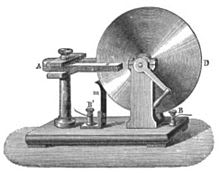 The phenomena of electricity had been known by tmahe ancient Greeks. Benjamin Franklin had displayed the relationship between lightning and electricity. But, it was the invention of the Electric Dynamo by Michael Faraday which really opened up the way to the practical use of electricity. From Faraday’s Electric dynamo, we can trace so many modern electrical machines.
The phenomena of electricity had been known by tmahe ancient Greeks. Benjamin Franklin had displayed the relationship between lightning and electricity. But, it was the invention of the Electric Dynamo by Michael Faraday which really opened up the way to the practical use of electricity. From Faraday’s Electric dynamo, we can trace so many modern electrical machines.Analytical Engine (computer) – 1860s
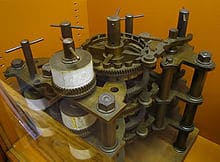 Charles Babbage’s analytic engine is often seen as the forerunner of the modern computer. It has the ability to be programmed and calculate for this. From these early experimental machines, we saw the development of later electronic versions. wasn’t really developed until after the 1940s.
Charles Babbage’s analytic engine is often seen as the forerunner of the modern computer. It has the ability to be programmed and calculate for this. From these early experimental machines, we saw the development of later electronic versions. wasn’t really developed until after the 1940s.Pasteurisation – 1864
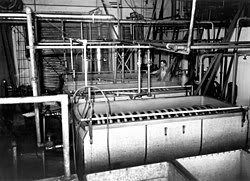 Developed by Louis Pasteur. This provided a way to prevent the growth of bacteria in substances such as wine, beer and milk. It made milk much safer to drink.
Developed by Louis Pasteur. This provided a way to prevent the growth of bacteria in substances such as wine, beer and milk. It made milk much safer to drink.Plastic – 1869
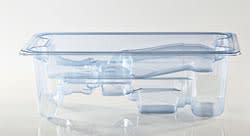 Developed by John Wesley Hyatt. Hyatt was an American printer and inventor. He was looking for a cheap substitute to ivory billiard balls. Hyatt combined cellulose nitrate and camphor to produce a mouldable versatile material – celluloid.
Developed by John Wesley Hyatt. Hyatt was an American printer and inventor. He was looking for a cheap substitute to ivory billiard balls. Hyatt combined cellulose nitrate and camphor to produce a mouldable versatile material – celluloid.Telephone – 1876
 The telephone was invented in 1876 by Alexander Graham Bell. Scottish born Bell was a teacher for the deaf at Boston University. In researching ways to teach the deaf, he experimented with transmitting sound via electricity. Teaching by day, he spent many hours of his spare time, developing a form of telephone.
The telephone was invented in 1876 by Alexander Graham Bell. Scottish born Bell was a teacher for the deaf at Boston University. In researching ways to teach the deaf, he experimented with transmitting sound via electricity. Teaching by day, he spent many hours of his spare time, developing a form of telephone.
He applied for a form of patent on March 7, 1876. Three days later he performed a demonstration of the new device, speaking the words. “Mr Watson, come here, I want you.”
Within five years, private telephone exchanges were in place in most US cities. It was an invention that caught on very quickly
Phonograph – 1877
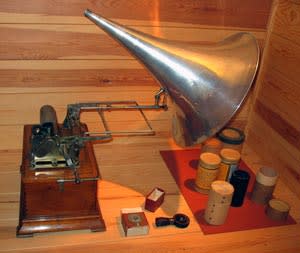 Thomas Edison found that sound could be captured and replayed using a rotating cylinder covered with paraffin paper and a stylus. In December 1888, Edison applied for a patent and over next few years helped to develop the modern gramophone based on the wax – cylinder model.
Thomas Edison found that sound could be captured and replayed using a rotating cylinder covered with paraffin paper and a stylus. In December 1888, Edison applied for a patent and over next few years helped to develop the modern gramophone based on the wax – cylinder model.Lightbulb 1879
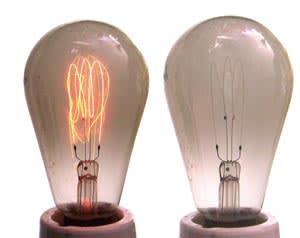 Throughout the nineteenth century, inventors produced simple electric lights. For example, Joseph Swan produced a simple electric light, but, he struggled to maintain a power source and the filament soon burned out when the vacuum was exhausted. It was Thomas Edison who made the lightbulb into a practical low current version. He used a filament based on a burned sewing thread.
Throughout the nineteenth century, inventors produced simple electric lights. For example, Joseph Swan produced a simple electric light, but, he struggled to maintain a power source and the filament soon burned out when the vacuum was exhausted. It was Thomas Edison who made the lightbulb into a practical low current version. He used a filament based on a burned sewing thread.Bicycle 1885
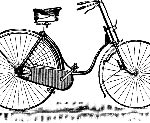 Velocipedes were invented early in the nineteenth century. The most popular at the time was the Penny Farthing, with its huge big wheel. But, the big advancement in bike technology came with the introduction of a chain to link pedals to back wheel. This enabled a higher speed without relying on a huge wheel. The key model in the chain bike was the Rover Safety bike developed by John Kemp Starley.
Velocipedes were invented early in the nineteenth century. The most popular at the time was the Penny Farthing, with its huge big wheel. But, the big advancement in bike technology came with the introduction of a chain to link pedals to back wheel. This enabled a higher speed without relying on a huge wheel. The key model in the chain bike was the Rover Safety bike developed by John Kemp Starley.
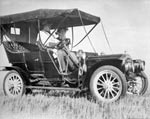 Motor Carriage – 1895
Motor Carriage – 1895
Beginning development in 1895, by 1898 the German engineer Karl Benz produced the first modern automobile using a patented internal combustion engine. The car used electrical ignition, a water-cooled internal combustion engine and different gears.
Aluminium 1886
 Until the 1890s, Aluminium was considered a precious metal because it was so hard to isolate. However, Ohio chemist, Charles Martin Hall discovered how to isolate Aluminium, through a process of electrolysis. This simple method enabled high quantities of aluminium to be produced. Its price fell from $18 a pound to 18 cents. Aluminium has become one of the most popular and versatile metals in industry.
Until the 1890s, Aluminium was considered a precious metal because it was so hard to isolate. However, Ohio chemist, Charles Martin Hall discovered how to isolate Aluminium, through a process of electrolysis. This simple method enabled high quantities of aluminium to be produced. Its price fell from $18 a pound to 18 cents. Aluminium has become one of the most popular and versatile metals in industry.Pneumatic Tyre – 1888
 Invented by John Boyd Dunlop; it was developed as a way to make tricycle riding more comfortable. His first attempt involved using an old garden hose fitted with air. He later developed this idea using a rubber pneumatic tyre and filed for a patent in 1888. It was later used on both bikes and motor cars.
Invented by John Boyd Dunlop; it was developed as a way to make tricycle riding more comfortable. His first attempt involved using an old garden hose fitted with air. He later developed this idea using a rubber pneumatic tyre and filed for a patent in 1888. It was later used on both bikes and motor cars.
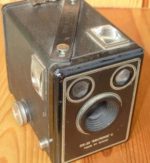 Box Camera – 1888
Box Camera – 1888
George Eastman developed the first small Kodak box camera made photography much more accessible to the public.
Electrons discovered 1897
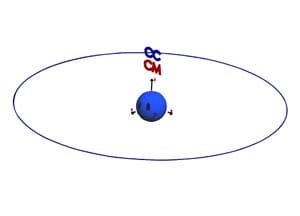 Joseph Thompson was the first scientist to show that the atom wasn’t the smallest element, but, was actually composed of even tinier particles of which electrons were one.
Joseph Thompson was the first scientist to show that the atom wasn’t the smallest element, but, was actually composed of even tinier particles of which electrons were one.Radioactivity Measured 1898
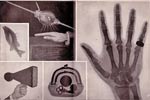 Marie Curie played a key role in the discovery and measurement of radioactivity. Her discoveries led to the successful implementation and use of X-ray machines by the First World War
Marie Curie played a key role in the discovery and measurement of radioactivity. Her discoveries led to the successful implementation and use of X-ray machines by the First World WarTransatlantic Telegram
 G. Marconi developed the first long-distance wireless communication. On 12 December 1901, the first telegram was sent across the Atlantic in Morse code. His invention was developed into the ‘wireless’ or radio.
G. Marconi developed the first long-distance wireless communication. On 12 December 1901, the first telegram was sent across the Atlantic in Morse code. His invention was developed into the ‘wireless’ or radio.Different Blood Types 1901
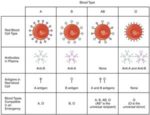 Karl Landsteiner isolated different blood groups enabling the first successful blood transfusion later.
Karl Landsteiner isolated different blood groups enabling the first successful blood transfusion later.Aeroplane 1903
 The Wright brothers piloted the first successful heavier than air aeroplane on Dec 17th, 1903. Within a few years, aeroplanes were successfully navigating long distances and soon began to transform both wartime and global travel.
The Wright brothers piloted the first successful heavier than air aeroplane on Dec 17th, 1903. Within a few years, aeroplanes were successfully navigating long distances and soon began to transform both wartime and global travel.Vacuum – 1908
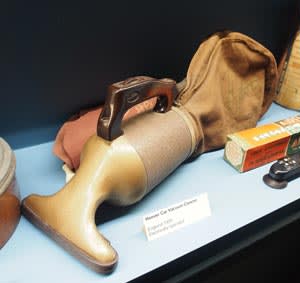 James Murray Spangler invented the electric vacuum cleaner. The first model used a broomstick, pillow and a box containing electric motor and fan. He applied for a patent in 1908. William Hoover helped finance its development for the mass market.
James Murray Spangler invented the electric vacuum cleaner. The first model used a broomstick, pillow and a box containing electric motor and fan. He applied for a patent in 1908. William Hoover helped finance its development for the mass market.Radar 1924
 Edward Appleton developed a way of detecting aircraft using sonic radar. This proved useful in the Second World War for the British who pioneered the use of radar.
Edward Appleton developed a way of detecting aircraft using sonic radar. This proved useful in the Second World War for the British who pioneered the use of radar.Email 1972
 The first true email system was MIT’s CTSS MAIL, in 1965. But, it only worked for those logged into the system. Email networks included the first ARPANET email sent in 1972 developed by Ray Tomlinson.
The first true email system was MIT’s CTSS MAIL, in 1965. But, it only worked for those logged into the system. Email networks included the first ARPANET email sent in 1972 developed by Ray Tomlinson.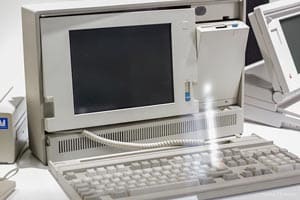 The Personal computer 1980s
The Personal computer 1980s
In the 1980s, the microchip enabled households to have their own personal computer. This enabled people to print letters, use for relaxation and multiple other uses.

The Mobile Phone 1980s
The mobile phone enabled people to take calls on the move, rather than be tied to a landline. Mobile phones also enabled text messages to be sent.
Internet/World Wide Web 1990
 Tim Berners Lee wrote software for the World Wide Web (WWW) in 1990. This helped to revolutionize the internet and make it freely available to the world.
Tim Berners Lee wrote software for the World Wide Web (WWW) in 1990. This helped to revolutionize the internet and make it freely available to the world.The Smartphone 2000s
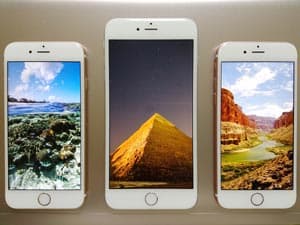 The Smartphone combined many technologies in one. The modern smartphone has enabled calls, texts, internet access, camera and a variety of apps.
The Smartphone combined many technologies in one. The modern smartphone has enabled calls, texts, internet access, camera and a variety of apps.
Citation: Pettinger, Tejvan “Modern Inventions that changed the world”, Oxford, UK. www.biographyonline.net – 10th March 2015. Last updated 5 March 2018.
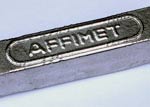 Aluminium (1880s) Aluminium is one of the most abundant metals. But, it was only in the 1880s that production processes were invented which enabled aluminium to be produced cheaply. Carl Wilhelm Siemens (US) developed a smelter to produce Aluminium from Bauxite ore in 1886. Aluminium is used extensively in building and aeroplane manufacture.
Aluminium (1880s) Aluminium is one of the most abundant metals. But, it was only in the 1880s that production processes were invented which enabled aluminium to be produced cheaply. Carl Wilhelm Siemens (US) developed a smelter to produce Aluminium from Bauxite ore in 1886. Aluminium is used extensively in building and aeroplane manufacture.
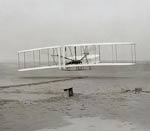 Aeroplane/aviation (1903) The first powered, heavier than air flight was undertaken by Orville Wright on December 17, 1903. The first aeroplane was made of wood. By 1909, they made a demonstration of flight around the Hudson River in New York. Aeroplane technology rapidly improved, and they were used for military means in the First World War.
Aeroplane/aviation (1903) The first powered, heavier than air flight was undertaken by Orville Wright on December 17, 1903. The first aeroplane was made of wood. By 1909, they made a demonstration of flight around the Hudson River in New York. Aeroplane technology rapidly improved, and they were used for military means in the First World War.
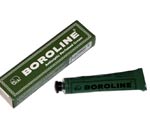 Antiseptics (1850) Dr Semmelweis a Hungarian physician was the first prominent doctor to make a strong link between the use of antiseptics and improving survival rates of women giving birth. His work was taken up by others, such as Joseph Lister who became a pioneer of antiseptic surgery.
Antiseptics (1850) Dr Semmelweis a Hungarian physician was the first prominent doctor to make a strong link between the use of antiseptics and improving survival rates of women giving birth. His work was taken up by others, such as Joseph Lister who became a pioneer of antiseptic surgery.
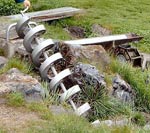 Archimedes Screw (3rd Century BC). Invented by Archimedes of Syracuse, this innovative design enabled water to be pulled uphill against gravity.
Archimedes Screw (3rd Century BC). Invented by Archimedes of Syracuse, this innovative design enabled water to be pulled uphill against gravity.
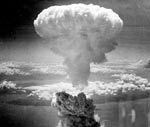 Atomic Bomb (1939-1945) Between this period a team of scientists developed the first atomic bomb as part of the Manhattan project. Chief of the project was Robert Oppenheimer. Albert Einstein’s letter in 1939 warning that the Nazi’s were developing a bomb was important in creating an impetus for the project.
Atomic Bomb (1939-1945) Between this period a team of scientists developed the first atomic bomb as part of the Manhattan project. Chief of the project was Robert Oppenheimer. Albert Einstein’s letter in 1939 warning that the Nazi’s were developing a bomb was important in creating an impetus for the project.
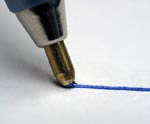 Ballpoint pen (1938) László Bíró, a Hungarian newspaper editor, developed a more suitable ink and ball socket mechanism to prevent ink drying. He filed his first patent in 1938 for a ballpoint pen in Argentina. After the war, varieties of the ballpoint pen became commercially successful.
Ballpoint pen (1938) László Bíró, a Hungarian newspaper editor, developed a more suitable ink and ball socket mechanism to prevent ink drying. He filed his first patent in 1938 for a ballpoint pen in Argentina. After the war, varieties of the ballpoint pen became commercially successful.
 Barbed wire (1867) The first patent for barbed wire was awarded to Lucien B. Smith. Barbed wire became a very cheap way of creating an effective barrier. Initially used in agriculture to keep animals in certain areas. It became widely used for military purposes.
Barbed wire (1867) The first patent for barbed wire was awarded to Lucien B. Smith. Barbed wire became a very cheap way of creating an effective barrier. Initially used in agriculture to keep animals in certain areas. It became widely used for military purposes.
 Battery (1800) Voltaic Pile. Alessandro Volta an Italian physicist developed the first battery which gave a steady current using alternating layers of copper and zinc. Lew Urry developed the small alkaline battery in 1949.
Battery (1800) Voltaic Pile. Alessandro Volta an Italian physicist developed the first battery which gave a steady current using alternating layers of copper and zinc. Lew Urry developed the small alkaline battery in 1949.
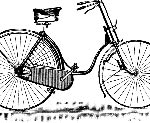 Bicycle (1839) Kirkpatrick MacMillan, a Scottish blacksmith, is said to have developed the first two wheeled pedal powered bicycle. In the 1860s, the Michaux or ‘boneshaker’ improved on this design and started a boom in bicycle use.
Bicycle (1839) Kirkpatrick MacMillan, a Scottish blacksmith, is said to have developed the first two wheeled pedal powered bicycle. In the 1860s, the Michaux or ‘boneshaker’ improved on this design and started a boom in bicycle use.
 Camera (1839) Louis Daguerre, a French innovator, spent many years developing the process of photography. In 1839, he made the first camera which enabled a permanent photograph to be taken. In 1889, George Eastman invented the flexible role of film which enabled photography to be much more practical.
Camera (1839) Louis Daguerre, a French innovator, spent many years developing the process of photography. In 1839, he made the first camera which enabled a permanent photograph to be taken. In 1889, George Eastman invented the flexible role of film which enabled photography to be much more practical.
 Computer (1940-45) Charles Babbage was considered the father of computers for his work on mechanical computation devices. But it was only in the 1940s that the first electronic computers were produced. For example, Howard Aiken & Grace Hopper developed the Harvard Mark I computer in 1944.
Computer (1940-45) Charles Babbage was considered the father of computers for his work on mechanical computation devices. But it was only in the 1940s that the first electronic computers were produced. For example, Howard Aiken & Grace Hopper developed the Harvard Mark I computer in 1944.
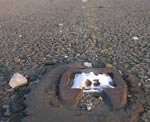

 Concrete (1824) English inventor, Joseph Aspdin developed hydraulic cement, which used a mix of limestone, clay and aggregate.
Concrete (1824) English inventor, Joseph Aspdin developed hydraulic cement, which used a mix of limestone, clay and aggregate.
 Electricity (1832) Michael Faraday (England) and Joseph Henry (US) both built models of electricity generators. Nikola Tesla developed the first AC electricity generator in 1892.
Electricity (1832) Michael Faraday (England) and Joseph Henry (US) both built models of electricity generators. Nikola Tesla developed the first AC electricity generator in 1892.
 Email (1971) Ray Tomlinson (US) developed the first electronic communication message. The email was sent between two computers on the same network.
Email (1971) Ray Tomlinson (US) developed the first electronic communication message. The email was sent between two computers on the same network.
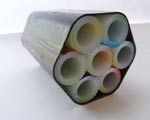 Fibre Optics (1958) Modern fibre optics using high purity SiO2 (rather than copper wire) was developed by Sam DiVita (US) and Richard Sturzebecher (US). This enabled much more efficient communication.
Fibre Optics (1958) Modern fibre optics using high purity SiO2 (rather than copper wire) was developed by Sam DiVita (US) and Richard Sturzebecher (US). This enabled much more efficient communication.
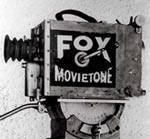 Film (1895) Frenchman Louis Lumiere developed one of the first moving film recorders, which they called Cinematographe.
Film (1895) Frenchman Louis Lumiere developed one of the first moving film recorders, which they called Cinematographe.
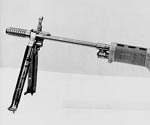 Guns (1718) The first gun prototypes using gunpowder to launch missiles were developed in the Tenth-Century by the Chinese. The first rifle ‘Puckle Gun’ was developed in 1718 and the first revolver ‘The Colt’ in 1836. The first machine gun in 1884 by Sir Hiram Maxim.
Guns (1718) The first gun prototypes using gunpowder to launch missiles were developed in the Tenth-Century by the Chinese. The first rifle ‘Puckle Gun’ was developed in 1718 and the first revolver ‘The Colt’ in 1836. The first machine gun in 1884 by Sir Hiram Maxim.
 Internet (1982) The first internet protocol was established in 1982. In 1985, the first dot-com domain was registered. In 1990, Tim Berners-Leedeveloped the World Wide Web the first internet web browser.
Internet (1982) The first internet protocol was established in 1982. In 1985, the first dot-com domain was registered. In 1990, Tim Berners-Leedeveloped the World Wide Web the first internet web browser.
 Matches (1826) John Walker (English) developed the first friction match which could be lit by striking sandpaper. The first safety match originated in 1844 created by a Swede Gustaf Erik Pasch.
Matches (1826) John Walker (English) developed the first friction match which could be lit by striking sandpaper. The first safety match originated in 1844 created by a Swede Gustaf Erik Pasch.

 Paper (105) Tsai Lun – Lun was an official in the Chinese civil service. He reported and developed its use in recording the business of the Chinese state.
Paper (105) Tsai Lun – Lun was an official in the Chinese civil service. He reported and developed its use in recording the business of the Chinese state.
 Motor car (1886) Carl Benz (Germany) is credited with the first patent for the modern motor car with a petrol combustion engine. Many similar designs were developed around the same time.
Motor car (1886) Carl Benz (Germany) is credited with the first patent for the modern motor car with a petrol combustion engine. Many similar designs were developed around the same time.
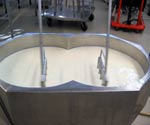 Pasteurisation (1768) Invented by Italian Lazzaro Spallanzani in 1768 – it is a process of killing bacteria in food. Louis Pasteur (1864) developed a more modern form of pasteurisation which helped make milk and wine safer to drink.
Pasteurisation (1768) Invented by Italian Lazzaro Spallanzani in 1768 – it is a process of killing bacteria in food. Louis Pasteur (1864) developed a more modern form of pasteurisation which helped make milk and wine safer to drink.
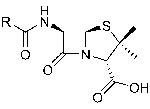 Penicillin (1928) Discovered by Alexander Fleming (Scotland) who found the growth of penicillin on a jar of mould left overnight. Penicillin was later mass produced by Howard Florey (Aus) and a team of scientists enabling it to be used during the Second World War.
Penicillin (1928) Discovered by Alexander Fleming (Scotland) who found the growth of penicillin on a jar of mould left overnight. Penicillin was later mass produced by Howard Florey (Aus) and a team of scientists enabling it to be used during the Second World War.
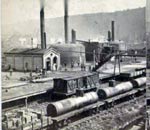
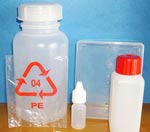 Plastic (1862) Alexander Parkes (England) Parkes demonstrated a plastic which was made from heated cellulose and moulded into a shape. Other important developments include 1908 – Cellophane – Jacques E. Brandenberger.
Plastic (1862) Alexander Parkes (England) Parkes demonstrated a plastic which was made from heated cellulose and moulded into a shape. Other important developments include 1908 – Cellophane – Jacques E. Brandenberger.
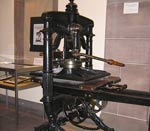 Printing Press (1450) The first printing press was designed by Johannes Gutenberg in Germany. The printing press played a key role in the Protestant Reformation – as pamphlets and books were mass produced for the first time, helping to spread new ideas more quickly.
Printing Press (1450) The first printing press was designed by Johannes Gutenberg in Germany. The printing press played a key role in the Protestant Reformation – as pamphlets and books were mass produced for the first time, helping to spread new ideas more quickly.
 Radio (1895) G. Marconi (Italy) sent and received the first radio waves in 1895. Nikola Tesla took out the first patent for radio using his Tesla’s coil.
Radio (1895) G. Marconi (Italy) sent and received the first radio waves in 1895. Nikola Tesla took out the first patent for radio using his Tesla’s coil.
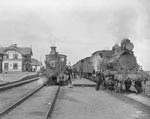 Railways (1830) The first railways originated in England, and they played a key role in the industrial revolution – helping with the transfer of goods and people. For the first time, people could travel across the country in less than a day. George Stephenson built the first inter-city railway between Liverpool and Manchester in 1830
Railways (1830) The first railways originated in England, and they played a key role in the industrial revolution – helping with the transfer of goods and people. For the first time, people could travel across the country in less than a day. George Stephenson built the first inter-city railway between Liverpool and Manchester in 1830
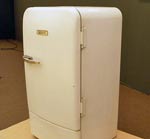
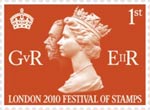 Stamps (1837) Rowland Hill proposed the first stamp as a way to offer cheap postal delivery. His proposals led to a universal postage system and the introduction of the first stamp – The Penny Black.
Stamps (1837) Rowland Hill proposed the first stamp as a way to offer cheap postal delivery. His proposals led to a universal postage system and the introduction of the first stamp – The Penny Black.
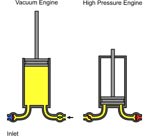 Steam Engines (1968) Thomas Savery developed the first crude pressure-cooker style steam engine. Thomas Newcomen (1712) significantly developed this with an atmospheric steam engine (pumping steam into a cylinder) James Watt (1765) improved this with a condenser that could cool while the cylinder was hot. Watt’s steam engine became the dominant design of the industrial revolution
Steam Engines (1968) Thomas Savery developed the first crude pressure-cooker style steam engine. Thomas Newcomen (1712) significantly developed this with an atmospheric steam engine (pumping steam into a cylinder) James Watt (1765) improved this with a condenser that could cool while the cylinder was hot. Watt’s steam engine became the dominant design of the industrial revolution
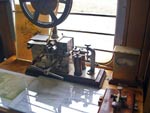 Telegraph (1835) Samuel Morse (a professor of arts and design at New York University) effectively demonstrated that signals could be transmitted by wire using pulses of current deflected by electro-magnet. The Telegraph enabled long-distance communication, including transatlantic signals.
Telegraph (1835) Samuel Morse (a professor of arts and design at New York University) effectively demonstrated that signals could be transmitted by wire using pulses of current deflected by electro-magnet. The Telegraph enabled long-distance communication, including transatlantic signals.
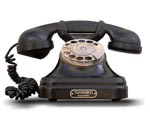
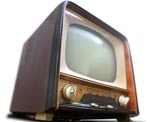
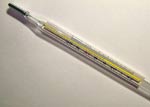 Thermometer (17th Century) Galileo Galilei (Italy) claimed the invention of a thermoscope which showed changes in temperature as liquid expanded and contracted. Many other scientists contributed to the development of the thermometer. (G.Bianchi and Robert Fludd)
Thermometer (17th Century) Galileo Galilei (Italy) claimed the invention of a thermoscope which showed changes in temperature as liquid expanded and contracted. Many other scientists contributed to the development of the thermometer. (G.Bianchi and Robert Fludd)
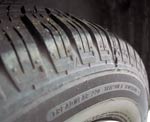 Tyres (1890) The pneumatic tyre was developed by John Boyd Dunlop in the 1880s. This helped to revolutionise transport – especially for the bicycle and motor car. The pneumatic tyre had an inner tube of air to help give a more comfortable ride than the solid tyres.
Tyres (1890) The pneumatic tyre was developed by John Boyd Dunlop in the 1880s. This helped to revolutionise transport – especially for the bicycle and motor car. The pneumatic tyre had an inner tube of air to help give a more comfortable ride than the solid tyres.
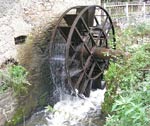
 The wheel (4th millennium BC) The wheel is perhaps the oldest invention, and no-one is exactly certain when it was invented, but it emerged in different regions independently. It enabled quicker transportation by chariots and pack drawn animal carriages.
The wheel (4th millennium BC) The wheel is perhaps the oldest invention, and no-one is exactly certain when it was invented, but it emerged in different regions independently. It enabled quicker transportation by chariots and pack drawn animal carriages.
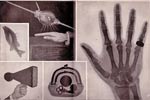 X-Rays (1903) The use of X-Rays were pioneered by William Coolidge who invented the Coolidge tube. Marie Curie’s work on radiology enabled a big advance in X-ray technology and it was used in the First World War
X-Rays (1903) The use of X-Rays were pioneered by William Coolidge who invented the Coolidge tube. Marie Curie’s work on radiology enabled a big advance in X-ray technology and it was used in the First World War
A list of famous inventions that helped change the world.
Note. Many inventions are often progressive developments, with no one person fully responsible. In many cases, it is hard to pin-point the exact date and person responsible for the invention. Sometimes many people are involved, with a basic model being improved on and turned into workable models.
 Aluminium (1880s) Aluminium is one of the most abundant metals. But, it was only in the 1880s that production processes were invented which enabled aluminium to be produced cheaply. Carl Wilhelm Siemens (US) developed a smelter to produce Aluminium from Bauxite ore in 1886. Aluminium is used extensively in building and aeroplane manufacture.
Aluminium (1880s) Aluminium is one of the most abundant metals. But, it was only in the 1880s that production processes were invented which enabled aluminium to be produced cheaply. Carl Wilhelm Siemens (US) developed a smelter to produce Aluminium from Bauxite ore in 1886. Aluminium is used extensively in building and aeroplane manufacture. Aeroplane/aviation (1903) The first powered, heavier than air flight was undertaken by Orville Wright on December 17, 1903. The first aeroplane was made of wood. By 1909, they made a demonstration of flight around the Hudson River in New York. Aeroplane technology rapidly improved, and they were used for military means in the First World War.
Aeroplane/aviation (1903) The first powered, heavier than air flight was undertaken by Orville Wright on December 17, 1903. The first aeroplane was made of wood. By 1909, they made a demonstration of flight around the Hudson River in New York. Aeroplane technology rapidly improved, and they were used for military means in the First World War. Antiseptics (1850) Dr Semmelweis a Hungarian physician was the first prominent doctor to make a strong link between the use of antiseptics and improving survival rates of women giving birth. His work was taken up by others, such as Joseph Lister who became a pioneer of antiseptic surgery.
Antiseptics (1850) Dr Semmelweis a Hungarian physician was the first prominent doctor to make a strong link between the use of antiseptics and improving survival rates of women giving birth. His work was taken up by others, such as Joseph Lister who became a pioneer of antiseptic surgery. Archimedes Screw (3rd Century BC). Invented by Archimedes of Syracuse, this innovative design enabled water to be pulled uphill against gravity.
Archimedes Screw (3rd Century BC). Invented by Archimedes of Syracuse, this innovative design enabled water to be pulled uphill against gravity. Atomic Bomb (1939-1945) Between this period a team of scientists developed the first atomic bomb as part of the Manhattan project. Chief of the project was Robert Oppenheimer. Albert Einstein’s letter in 1939 warning that the Nazi’s were developing a bomb was important in creating an impetus for the project.
Atomic Bomb (1939-1945) Between this period a team of scientists developed the first atomic bomb as part of the Manhattan project. Chief of the project was Robert Oppenheimer. Albert Einstein’s letter in 1939 warning that the Nazi’s were developing a bomb was important in creating an impetus for the project. Ballpoint pen (1938) László Bíró, a Hungarian newspaper editor, developed a more suitable ink and ball socket mechanism to prevent ink drying. He filed his first patent in 1938 for a ballpoint pen in Argentina. After the war, varieties of the ballpoint pen became commercially successful.
Ballpoint pen (1938) László Bíró, a Hungarian newspaper editor, developed a more suitable ink and ball socket mechanism to prevent ink drying. He filed his first patent in 1938 for a ballpoint pen in Argentina. After the war, varieties of the ballpoint pen became commercially successful. Barbed wire (1867) The first patent for barbed wire was awarded to Lucien B. Smith. Barbed wire became a very cheap way of creating an effective barrier. Initially used in agriculture to keep animals in certain areas. It became widely used for military purposes.
Barbed wire (1867) The first patent for barbed wire was awarded to Lucien B. Smith. Barbed wire became a very cheap way of creating an effective barrier. Initially used in agriculture to keep animals in certain areas. It became widely used for military purposes. Battery (1800) Voltaic Pile. Alessandro Volta an Italian physicist developed the first battery which gave a steady current using alternating layers of copper and zinc. Lew Urry developed the small alkaline battery in 1949.
Battery (1800) Voltaic Pile. Alessandro Volta an Italian physicist developed the first battery which gave a steady current using alternating layers of copper and zinc. Lew Urry developed the small alkaline battery in 1949. Bicycle (1839) Kirkpatrick MacMillan, a Scottish blacksmith, is said to have developed the first two wheeled pedal powered bicycle. In the 1860s, the Michaux or ‘boneshaker’ improved on this design and started a boom in bicycle use.
Bicycle (1839) Kirkpatrick MacMillan, a Scottish blacksmith, is said to have developed the first two wheeled pedal powered bicycle. In the 1860s, the Michaux or ‘boneshaker’ improved on this design and started a boom in bicycle use. Camera (1839) Louis Daguerre, a French innovator, spent many years developing the process of photography. In 1839, he made the first camera which enabled a permanent photograph to be taken. In 1889, George Eastman invented the flexible role of film which enabled photography to be much more practical.
Camera (1839) Louis Daguerre, a French innovator, spent many years developing the process of photography. In 1839, he made the first camera which enabled a permanent photograph to be taken. In 1889, George Eastman invented the flexible role of film which enabled photography to be much more practical. Computer (1940-45) Charles Babbage was considered the father of computers for his work on mechanical computation devices. But it was only in the 1940s that the first electronic computers were produced. For example, Howard Aiken & Grace Hopper developed the Harvard Mark I computer in 1944.
Computer (1940-45) Charles Babbage was considered the father of computers for his work on mechanical computation devices. But it was only in the 1940s that the first electronic computers were produced. For example, Howard Aiken & Grace Hopper developed the Harvard Mark I computer in 1944.
Cat eyes (1934) Developed by Percy Shaw of Halifax, England. Shaw’s design using a reflective lens embedded in the road; it enabled motorists to have better visibility when driving during the night.

Clocks (1656) Christian Huygens developed the pendulum which made primitive clocks more accurate.
 Concrete (1824) English inventor, Joseph Aspdin developed hydraulic cement, which used a mix of limestone, clay and aggregate.
Concrete (1824) English inventor, Joseph Aspdin developed hydraulic cement, which used a mix of limestone, clay and aggregate. Electricity (1832) Michael Faraday (England) and Joseph Henry (US) both built models of electricity generators. Nikola Tesla developed the first AC electricity generator in 1892.
Electricity (1832) Michael Faraday (England) and Joseph Henry (US) both built models of electricity generators. Nikola Tesla developed the first AC electricity generator in 1892. Email (1971) Ray Tomlinson (US) developed the first electronic communication message. The email was sent between two computers on the same network.
Email (1971) Ray Tomlinson (US) developed the first electronic communication message. The email was sent between two computers on the same network. Fibre Optics (1958) Modern fibre optics using high purity SiO2 (rather than copper wire) was developed by Sam DiVita (US) and Richard Sturzebecher (US). This enabled much more efficient communication.
Fibre Optics (1958) Modern fibre optics using high purity SiO2 (rather than copper wire) was developed by Sam DiVita (US) and Richard Sturzebecher (US). This enabled much more efficient communication. Film (1895) Frenchman Louis Lumiere developed one of the first moving film recorders, which they called Cinematographe.
Film (1895) Frenchman Louis Lumiere developed one of the first moving film recorders, which they called Cinematographe. Guns (1718) The first gun prototypes using gunpowder to launch missiles were developed in the Tenth-Century by the Chinese. The first rifle ‘Puckle Gun’ was developed in 1718 and the first revolver ‘The Colt’ in 1836. The first machine gun in 1884 by Sir Hiram Maxim.
Guns (1718) The first gun prototypes using gunpowder to launch missiles were developed in the Tenth-Century by the Chinese. The first rifle ‘Puckle Gun’ was developed in 1718 and the first revolver ‘The Colt’ in 1836. The first machine gun in 1884 by Sir Hiram Maxim. Internet (1982) The first internet protocol was established in 1982. In 1985, the first dot-com domain was registered. In 1990, Tim Berners-Leedeveloped the World Wide Web the first internet web browser.
Internet (1982) The first internet protocol was established in 1982. In 1985, the first dot-com domain was registered. In 1990, Tim Berners-Leedeveloped the World Wide Web the first internet web browser. Matches (1826) John Walker (English) developed the first friction match which could be lit by striking sandpaper. The first safety match originated in 1844 created by a Swede Gustaf Erik Pasch.
Matches (1826) John Walker (English) developed the first friction match which could be lit by striking sandpaper. The first safety match originated in 1844 created by a Swede Gustaf Erik Pasch.
Morse Code (1836) Samuel Morse (US) – Morse developed a system of dots and dashes to help send telegraphs over long distance wire
 Paper (105) Tsai Lun – Lun was an official in the Chinese civil service. He reported and developed its use in recording the business of the Chinese state.
Paper (105) Tsai Lun – Lun was an official in the Chinese civil service. He reported and developed its use in recording the business of the Chinese state. Motor car (1886) Carl Benz (Germany) is credited with the first patent for the modern motor car with a petrol combustion engine. Many similar designs were developed around the same time.
Motor car (1886) Carl Benz (Germany) is credited with the first patent for the modern motor car with a petrol combustion engine. Many similar designs were developed around the same time. Pasteurisation (1768) Invented by Italian Lazzaro Spallanzani in 1768 – it is a process of killing bacteria in food. Louis Pasteur (1864) developed a more modern form of pasteurisation which helped make milk and wine safer to drink.
Pasteurisation (1768) Invented by Italian Lazzaro Spallanzani in 1768 – it is a process of killing bacteria in food. Louis Pasteur (1864) developed a more modern form of pasteurisation which helped make milk and wine safer to drink. Penicillin (1928) Discovered by Alexander Fleming (Scotland) who found the growth of penicillin on a jar of mould left overnight. Penicillin was later mass produced by Howard Florey (Aus) and a team of scientists enabling it to be used during the Second World War.
Penicillin (1928) Discovered by Alexander Fleming (Scotland) who found the growth of penicillin on a jar of mould left overnight. Penicillin was later mass produced by Howard Florey (Aus) and a team of scientists enabling it to be used during the Second World War.
Petrol (1859) Edwin Drake (US) Modern drilling and refinement of oil into petrol began around the middle of the Nineteenth Century. It enabled petrol to be used as a fuel in the internal combustion engine.
 Plastic (1862) Alexander Parkes (England) Parkes demonstrated a plastic which was made from heated cellulose and moulded into a shape. Other important developments include 1908 – Cellophane – Jacques E. Brandenberger.
Plastic (1862) Alexander Parkes (England) Parkes demonstrated a plastic which was made from heated cellulose and moulded into a shape. Other important developments include 1908 – Cellophane – Jacques E. Brandenberger. Printing Press (1450) The first printing press was designed by Johannes Gutenberg in Germany. The printing press played a key role in the Protestant Reformation – as pamphlets and books were mass produced for the first time, helping to spread new ideas more quickly.
Printing Press (1450) The first printing press was designed by Johannes Gutenberg in Germany. The printing press played a key role in the Protestant Reformation – as pamphlets and books were mass produced for the first time, helping to spread new ideas more quickly. Radio (1895) G. Marconi (Italy) sent and received the first radio waves in 1895. Nikola Tesla took out the first patent for radio using his Tesla’s coil.
Radio (1895) G. Marconi (Italy) sent and received the first radio waves in 1895. Nikola Tesla took out the first patent for radio using his Tesla’s coil. Railways (1830) The first railways originated in England, and they played a key role in the industrial revolution – helping with the transfer of goods and people. For the first time, people could travel across the country in less than a day. George Stephenson built the first inter-city railway between Liverpool and Manchester in 1830
Railways (1830) The first railways originated in England, and they played a key role in the industrial revolution – helping with the transfer of goods and people. For the first time, people could travel across the country in less than a day. George Stephenson built the first inter-city railway between Liverpool and Manchester in 1830
Refrigerators (1748) -William Cullen (Scotland) Cullen displayed the first successful refrigeration at the University of Glasgow. Fridges use rapid cooling of gases as the main source of their artificial cooling effect. In 1805 Oliver Evans (US) invented the first refrigerator machine.
 Stamps (1837) Rowland Hill proposed the first stamp as a way to offer cheap postal delivery. His proposals led to a universal postage system and the introduction of the first stamp – The Penny Black.
Stamps (1837) Rowland Hill proposed the first stamp as a way to offer cheap postal delivery. His proposals led to a universal postage system and the introduction of the first stamp – The Penny Black. Steam Engines (1968) Thomas Savery developed the first crude pressure-cooker style steam engine. Thomas Newcomen (1712) significantly developed this with an atmospheric steam engine (pumping steam into a cylinder) James Watt (1765) improved this with a condenser that could cool while the cylinder was hot. Watt’s steam engine became the dominant design of the industrial revolution
Steam Engines (1968) Thomas Savery developed the first crude pressure-cooker style steam engine. Thomas Newcomen (1712) significantly developed this with an atmospheric steam engine (pumping steam into a cylinder) James Watt (1765) improved this with a condenser that could cool while the cylinder was hot. Watt’s steam engine became the dominant design of the industrial revolution Telegraph (1835) Samuel Morse (a professor of arts and design at New York University) effectively demonstrated that signals could be transmitted by wire using pulses of current deflected by electro-magnet. The Telegraph enabled long-distance communication, including transatlantic signals.
Telegraph (1835) Samuel Morse (a professor of arts and design at New York University) effectively demonstrated that signals could be transmitted by wire using pulses of current deflected by electro-magnet. The Telegraph enabled long-distance communication, including transatlantic signals.
Telephone (1880s) Graham Alexander Bell (Scotland) Antonio Meucci. (US) Both inventors have a claim for inventing the telephone – enabling the ability to speak to someone at a significant distance.

Television (1925) Many people contributed to the development of the TV. But, John Logie Baird is credited with displaying one of the first moving images on a TV screen. Logie made use of a Nipkow disc and a Cathode Ray Tube.
 Thermometer (17th Century) Galileo Galilei (Italy) claimed the invention of a thermoscope which showed changes in temperature as liquid expanded and contracted. Many other scientists contributed to the development of the thermometer. (G.Bianchi and Robert Fludd)
Thermometer (17th Century) Galileo Galilei (Italy) claimed the invention of a thermoscope which showed changes in temperature as liquid expanded and contracted. Many other scientists contributed to the development of the thermometer. (G.Bianchi and Robert Fludd) Tyres (1890) The pneumatic tyre was developed by John Boyd Dunlop in the 1880s. This helped to revolutionise transport – especially for the bicycle and motor car. The pneumatic tyre had an inner tube of air to help give a more comfortable ride than the solid tyres.
Tyres (1890) The pneumatic tyre was developed by John Boyd Dunlop in the 1880s. This helped to revolutionise transport – especially for the bicycle and motor car. The pneumatic tyre had an inner tube of air to help give a more comfortable ride than the solid tyres.
Water Wheel (4000 BC) The water wheel was one of the first human inventions to capture mechanical energy and was used to help grind corn. In modern times, the water wheel was improved to drive an hydraulic turbine.
 The wheel (4th millennium BC) The wheel is perhaps the oldest invention, and no-one is exactly certain when it was invented, but it emerged in different regions independently. It enabled quicker transportation by chariots and pack drawn animal carriages.
The wheel (4th millennium BC) The wheel is perhaps the oldest invention, and no-one is exactly certain when it was invented, but it emerged in different regions independently. It enabled quicker transportation by chariots and pack drawn animal carriages. X-Rays (1903) The use of X-Rays were pioneered by William Coolidge who invented the Coolidge tube. Marie Curie’s work on radiology enabled a big advance in X-ray technology and it was used in the First World War
X-Rays (1903) The use of X-Rays were pioneered by William Coolidge who invented the Coolidge tube. Marie Curie’s work on radiology enabled a big advance in X-ray technology and it was used in the First World War
No comments:
Post a Comment